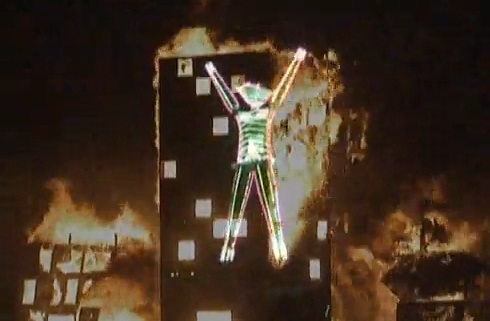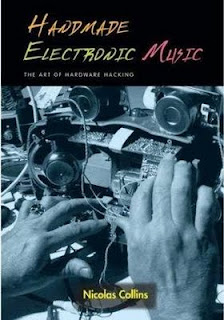In the Art, Music & Recreation Center we have many books that explain the cultural meaning and symbolism of all things inanimate, living or imagined.
Consider the caterpillar. Perhaps the most direct and helpful source is
Merriam-Webster's Visual Dictionary which both illustrates and defines the creature (a “butterfly larva having a long body and 10 feet”). It also labels and explains about the parts of the caterpillar (simple eye, head, mandible, thorax, walking let, proleg, abdominal segment, and anal clasper).
According to the
Dictionary of Symbols: An Illustrated Guide to Traditional Images, Icons, and Emblems, the caterpillar is said to represent the “lowly” and the “unformed.” This work correlates the caterpillar both with the Hindu belief in the transmigration of souls and with a Native American view of the creature as a “metaphor for sexual awakening.”
Symbols; Our Universal Language describes the caterpillar as symbolic of life, as “one stage of the development of a butterfly.” The
Bestiary of Christ cites a 5th century pope who compared Christ with a worm because he was resurrected (“
Vermis quia resurrexit”), his “broken body” transformed into a “glorious body” (the butterfly), thus the caterpillar came to represent the body of Christ and the Christian. This belief is further illustrated by a Merovingian gold ring from the 6th or 7th century with caterpillars on two sides and a fish in the center.
The
Illustrated Dictionary of Symbols in Eastern and Western Art similarly notes the progression from caterpillar and chrysalis to butterfly, connecting it to allegorical Vanitas still-life paintings. In an earlier book,
Dictionary of Subjects and Symbols in Art, Hall writes that these paintings “signify not merely the insect life-cycle but the stages of man’s earthly life, death and resurrection.
 Detail from "Vase of Flowers" [Bloemstuk met slaapbol en peulen] Jan Davidsz de Heem, source: Webmuseum (photograph by Carol Gerten-Jackson)
Detail from "Vase of Flowers" [Bloemstuk met slaapbol en peulen] Jan Davidsz de Heem, source: Webmuseum (photograph by Carol Gerten-Jackson)The discussion of "Vase of Flowers" by de Heem from the
National Gallery of Art's website highlights with "the white poppy at the top, a caterpillar and butterfly evoke the idea of rebirth from a cocoon or tomb." (The small black caterpillar is visible on the stem just below the white blossom).
The meaning of the caterpillar is also considered in
The Tattoo Encyclopedia: A Guide to Choosing Your Tattoo. The author also places the caterpillar within the framework of the life cycle, noting that while “crawling creatures are sometimes feared … the caterpillar offers something both visually and symbolically attractive in terms of life change.” This encyclopedia also has an entry for a “caterpillar with a hookah” -- a reference to Lewis Carroll’s
Alice in Wonderland that for the author symbolizes a relaxed experience, and the possibility of a hallucinatory narcotic.

The silkworm is perhaps the most exalted caterpillar.
Chinese Symbolism and Art Motifs describes the silkworm as “an emblem of industry.” The
Way of the Brush; Painting Techniques of China and Japan similarly notes the diligence of this creature. Finally the Chinese artist Zhang Shuqi in
Painting in the Chinese Manner compares the silkworm with the Chinese painters. As “the silkworm feeds upon mulberry leaves, and after due process of digestion changes this material into silk; in similar fashion, the artist calls from memory material absorbed through keen study of the world about him.”
From
Symbols: Signs and Their Meaning and Uses in Design we learn about the Caterpillar Club - an informal organization comprising those who have escaped from a crashing airplane by parachute. The groups name is an homage to the silkworm that spun the silk that made the parachute.
 Source: Wikimedia Commons
Source: Wikimedia CommonsPerhaps it is in a Tin Pan Alley era song where we can finally come to know the caterpillar. Dixie Willson's lyrics imagine the caterpillar as one who dreams dreams “that magic’ly come true” - “A caterpillar dreams himself / Right out of all his fuzz / And into lovely fairy wings” (
"The Caterpillar," music by Victor Young.
BibliographyBestiary of Christ by Louis Charbonneau-Lassay (Parabola Books, 1991).
"The Caterpillar, or, Winged Dreams," words by Dixie Willson ; music by Victor Young (Hinds, Hayden & Eldredge, 1924).
Chinese Symbolism and Art Motifs: An Alphabetical Compendium of Antique Legends and Beliefs, As Reflected in the Manners and Customs of the Chinese by C.A.S. Williams (C.E. Tuttle Co., 1988).
Dictionary of Subjects and Symbols in Art by James Hall (Harper & Row, 1974).
Dictionary of Symbols: An Illustrated Guide to Traditional Images, Icons, and Emblems by Jack Tresidder (Chronicle Books, 1998).
Illustrated Dictionary of Symbols in Eastern and Western Art by James Hall (IconEditions, 1994).
Jan Davidsz de Heem en Zijn Kring by Sam Segal (SDU, 1991).
Merriam-Webster's Visual Dictionary by Jean-Claude Corbeil and Ariane Archambault (Merriam-Webster, 2006).
Painting in the Chinese Manner by Zhang Shuqi (Viking Press, 1960).
Symbols; Our Univeral Language by Eva C. Hangen (McCormick-Armstrong, 1962).
Symbols: Signs and their Meaning and Uses in Design by Arnold Whittick, 2nd edition (1971).
The Tattoo Encyclopedia: A Guide to Choosing Your Tattoo by Terisa Green (Simon & Schuster, 2003).
The Way of the Brush; Painting Techniques of China and Japan by Fritz van Briessen (C.E. Tuttle Co., 1962)















